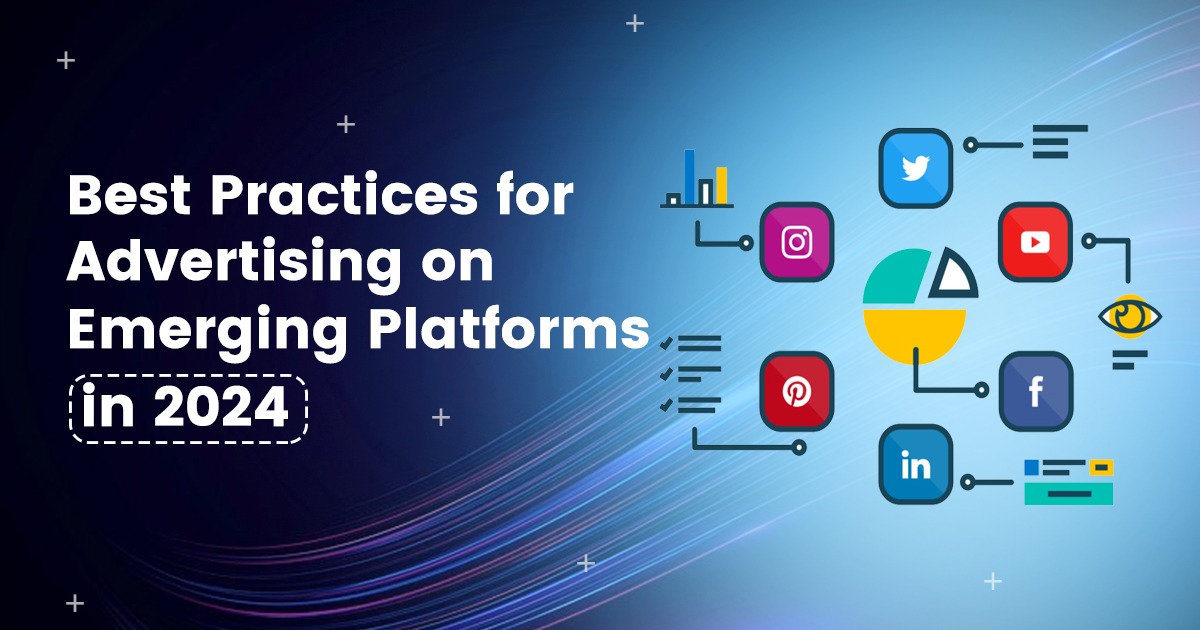Best Practices for Advertising on Emerging Platforms in 2024
|
Getting your Trinity Audio player ready...
|
Best Practices for Advertising on Emerging Platforms in 2024
As digital technology rapidly evolves, businesses must keep pace with emerging platforms to maintain a competitive edge in advertising. In 2024, platforms such as TikTok, Threads, and the metaverse are transforming the advertising landscape. These new environments offer opportunities to connect with diverse, younger audiences, but they also require an updated approach to strategy and content. Here are the best practices for advertising on emerging platforms in 2024, designed to help brands maximize their reach and effectiveness.

1. Understand Your Platform
Each emerging platform has its own unique culture, user behavior, and content style. Before diving into advertising, it’s crucial to understand how the platform operates and what its users expect.
For instance, TikTok is driven by short, engaging, and often humorous videos, while Threads, Meta’s microblogging platform, is more conversational and community-oriented. Advertisers should immerse themselves in these platforms to better understand the tone, style, and content types that perform best.
Moreover, platforms like Decentraland and other parts of the metaverse focus on immersive, 3D experiences. These virtual environments demand a more creative and interactive approach to advertising, with an emphasis on engagement rather than passive consumption. Understanding each platform’s core strengths will help advertisers create more targeted, resonant campaigns.
2. Prioritize Authenticity
In 2024, users, especially Gen Z, demand authenticity from the brands they engage with. As younger audiences become more skeptical of traditional advertising, brands must move away from hard-sell tactics. Instead, they should focus on storytelling, relatability, and transparency.
This is particularly true on platforms like TikTok and Instagram, where users gravitate toward content that feels genuine and unscripted. Advertisers should avoid overproduced ads and opt for real-life scenarios or user-generated content. Working with influencers who are genuinely aligned with the brand’s values can also help create a more authentic connection with audiences.
Additionally, threads of conversations on platforms like Threads encourage a more direct, personal form of interaction. Brands should adopt a more conversational tone, engaging in discussions instead of broadcasting overt sales messages.
3. Leverage User-Generated Content (UGC)
User-generated content remains a powerful tool for brands, particularly on social-first platforms. It not only enhances authenticity but also increases engagement by encouraging users to participate in the creation of brand content.
Platforms like TikTok have made UGC the norm, and this trend is spilling over into other emerging platforms. In 2024, brands should actively promote campaigns that involve challenges, contests, or collaborations with influencers to spur user participation.
For example, a fashion brand might run a TikTok challenge asking users to showcase their favorite outfits featuring their products. This not only spreads the brand’s message organically but also provides valuable social proof. The best part about UGC is that it feels less like an advertisement and more like genuine engagement.
4. Experiment with Augmented Reality (AR) and Virtual Reality (VR)
As immersive technologies grow, augmented reality (AR) and virtual reality (VR) are becoming integral to the advertising ecosystem. Platforms like Snapchat and Instagram have been at the forefront of AR with features like filters and interactive ads, but in 2024, AR/VR is set to expand even further, especially in the metaverse.
Brands can use AR to offer users interactive experiences, such as virtual try-ons or 3D product explorations. For instance, a beauty brand could enable users to try on makeup through an AR filter before purchasing it online. Similarly, in virtual worlds like Decentraland, brands can create virtual storefronts or sponsor virtual events, allowing users to engage with their products in immersive ways.
The key is to ensure that these AR/VR experiences are seamless and add value, rather than being gimmicky.
5. Embrace AI and Machine Learning for Targeting
With the sheer volume of data available in 2024, AI and machine learning have become essential tools for refining targeting strategies. Emerging platforms are integrating advanced AI algorithms that allow brands to deliver hyper-personalized ads to the right audience at the right time.
For example, AI can analyze user behavior on TikTok to predict which type of content a user will engage with most, enabling advertisers to craft more relevant ads. This level of targeting ensures higher engagement rates and a better return on ad spend.
AI-driven tools can also help brands adjust their campaigns in real-time, using machine learning to identify what’s working and what isn’t. Brands should experiment with AI capabilities on new platforms to continuously improve the performance of their ads.
6. Focus on Community Building
One of the most significant trends in 2024 is the shift toward community-driven platforms. Emerging platforms like Discord and Reddit have become hubs for niche communities, and advertisers are finding ways to tap into these spaces without being intrusive.
The best way to advertise on community-based platforms is by fostering relationships and providing value. Brands should become active participants in discussions, offering helpful insights or creating content that resonates with the community’s interests.
For example, a tech company could join a Discord server related to software development and contribute to discussions, share tutorials, or host events. This type of advertising is more subtle but can lead to a strong, loyal following.
7. Optimize for Mobile-First Experiences
As mobile usage continues to dominate, especially on platforms like TikTok, Instagram, and Threads, brands must ensure their ads are optimized for mobile-first experiences. This means creating content that loads quickly, is easy to navigate, and feels natural on small screens.
Vertical video formats, for example, have become essential for mobile ads. Brands should focus on creating short, vertical, and visually compelling content that grabs attention within the first few seconds. Additionally, ensure that the user journey from ad to purchase is smooth and optimized for mobile devices.
8. Measure and Adapt
Finally, advertising on emerging platforms requires continuous measurement and adaptation. These platforms are constantly evolving, with new features and algorithms being introduced regularly. Brands must keep a close eye on performance metrics, such as engagement rates, conversions, and ROI, and be willing to pivot their strategies based on what the data reveals.
Platforms often provide robust analytics tools that can help advertisers track the success of their campaigns. Regularly review these insights to identify trends and optimize future campaigns. Brands that remain flexible and open to experimentation will see the most success on these new platforms.
The advertising landscape in 2024 is dynamic and filled with opportunities for brands that are willing to embrace new platforms and adapt their strategies. By understanding each platform, focusing on authenticity, leveraging new technologies like AR/VR, and engaging with communities, brands can unlock the full potential of emerging platforms. The key is to stay agile, experiment with new ideas, and continuously refine your approach to keep pace with the ever-changing digital environment.

 Previous Post
Previous Post Next Post
Next Post